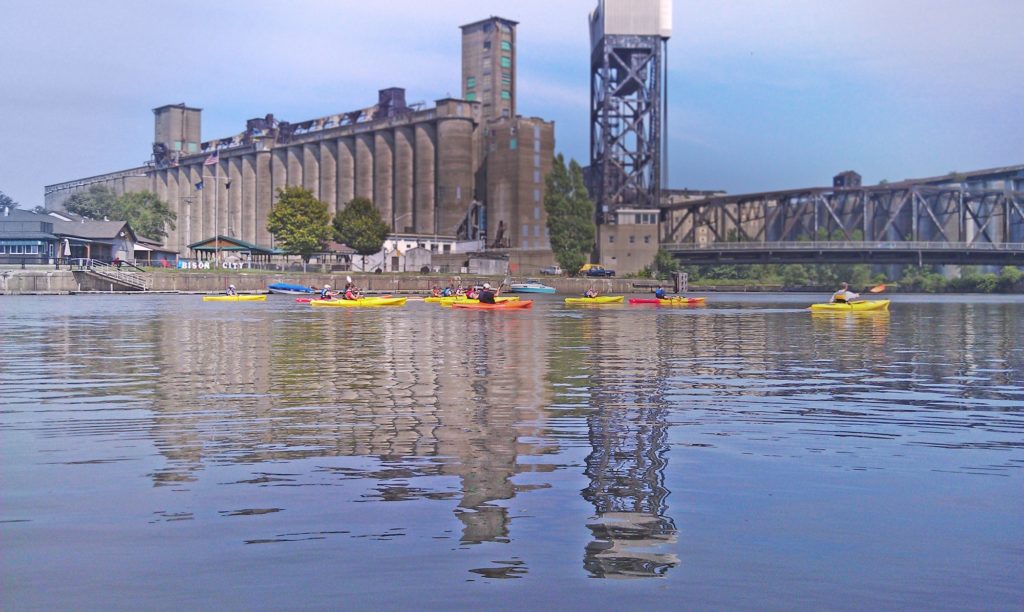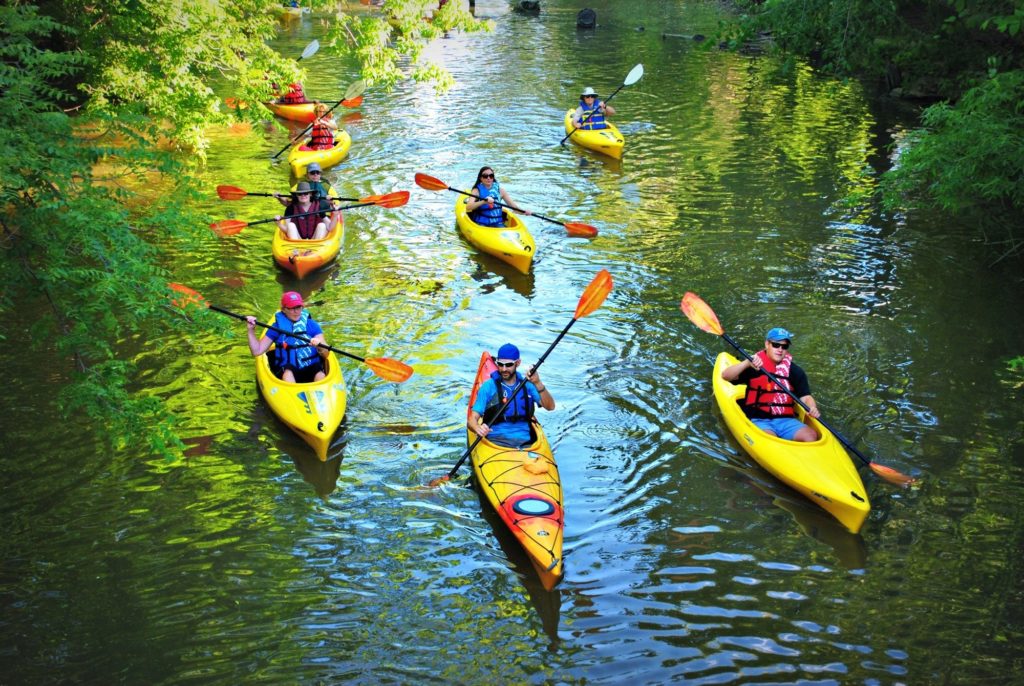Color Buffalo Niagara Waterkeeper an Even Deeper Blue
By: Waterkeeper Alliance
In 2016, Waterkeeper Magazine shared the story of the Buffalo River’s recovery. Entitled “From Rust to Blue,” the article gave a detailed account of the successful efforts of Buffalo Niagara Waterkeeper (formerly Buffalo Niagara Riverkeeper) to bring the Buffalo River back from the brink of death. Now, Buffalo Niagara Waterkeeper has taken this experience and translated it into a guide for regional waterways in its 2017 State of Our Waters report.
Western New York State, between Lake Erie and Lake Ontario, is located in the heart of the largest surface freshwater system in the world. The 1,400 square-mile Niagara River Watershed connects those two Great Lakes and contains nearly 3,200 miles of waterways and over 80 municipalities. Understanding and communicating water issues across its diverse ecosystems and geo-political landscapes is a daunting challenge that has been at the core of the organization’s mission for the last 28 years.


State of Our Waters starts with the premise that the health of the region’s waters has a direct impact on the revitalization of its ecology, economy and community. Nine indicators were selected to provide a “dashboard” report on the overall health of the region’s waters. Major turning points and current and emerging threats were also documented. While drinking-water and economic-activity categories received “good” ratings, several categories, including water infrastructure, toxic contamination, and bacteria, received a rating of “fair” or “poor.”
The most important component of State of Our Waters is the regional “Action Agenda.” This prescription is a culmination of decades of scientific research, water-policy development, restoration work, and field monitoring. The agenda is rooted in four basic principles: developing protection strategies, establishing restoration priorities, making human connections, and inspiring investment. Some of the prescribed priority actions include: minimizing sewer-overflows by formulating policy and initiating infrastructure projects, remediating historical contamination, creating “living” shorelines, expanding citizen science, and promoting eco-tourism to speed the transition from a “Rust to Blue” economy.
Buffalo Niagara Waterkeeper Jill Jedlicka explains the connection of this report to the re-branding of the organization: “By re-naming our organization Buffalo Niagara Waterkeeper, we are both expanding our commitment to our region’s waters and calling on individuals and institutions to restore and maintain these critical resources. We want everything. We want ecological restoration, we want a healthy river, but we also want thriving neighborhoods and a strong economy.”
Likewise, the ultimate goal of the State of Our Waters report is to provide meaningful and actionable information in order to engage all sectors of the region to protect the health of our waters. As Jedlicka repeatedly states, “Water connects all of us, and it will take all of us to protect our water.”
The State of Our Waters report can be found at www.bnwaterkeeper.org